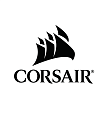 NVIDIA TITAN V
NVIDIA TITAN V
 Zotac GeForce GTX 1080 Ti ArcticStorm
Zotac GeForce GTX 1080 Ti ArcticStorm
Comparision NVIDIA TITAN V vs Zotac GeForce GTX 1080 Ti ArcticStorm
Grade
Top specs and features
Passmark score
Unigine Heaven 4.0 test score
GPU base clock speed
RAM
Memory bandwidth
Description
The NVIDIA TITAN V video card is based on the Volta architecture. Zotac GeForce GTX 1080 Ti ArcticStorm on the Pascal architecture. The first has 21100 million transistors. The second is 12000 million. NVIDIA TITAN V has a transistor size of 12 nm versus 16.
The base clock speed of the first video card is 1200 MHz versus 1506 MHz for the second.
Let's move on to memory. NVIDIA TITAN V has 12 GB. Zotac GeForce GTX 1080 Ti ArcticStorm has 12 GB installed. The bandwidth of the first video card is 651.3 Gb/s versus 484.4 Gb/s of the second.
FLOPS of NVIDIA TITAN V is 14.78. At Zotac GeForce GTX 1080 Ti ArcticStorm 11.26.
Goes to tests in benchmarks. In the Passmark benchmark, NVIDIA TITAN V scored 16464 points. And here is the second card 17375 points. In 3DMark, the first model scored There is no data points. Second 26527 points.
In terms of interfaces. The first video card is connected using PCIe 3.0 x16. The second is PCIe 3.0 x16. Video card NVIDIA TITAN V has Directx version 12.1. Video card Zotac GeForce GTX 1080 Ti ArcticStorm -- Directx version - 12.
Regarding cooling, NVIDIA TITAN V has 250W heat dissipation requirements versus 250W for Zotac GeForce GTX 1080 Ti ArcticStorm.
Why Zotac GeForce GTX 1080 Ti ArcticStorm is better than NVIDIA TITAN V
- RAM 12 GB против 11 GB, more on 9%
- Memory bandwidth 651.3 GB/s против 484.4 GB/s, more on 34%
- FLOPS 14.78 TFLOPS против 11.26 TFLOPS, more on 31%
- Technological process 12 nm против 16 nm, less by -25%
NVIDIA TITAN V vs Zotac GeForce GTX 1080 Ti ArcticStorm: highlights


Performance
Memory
General information
Functions
Benchmark tests
Ports
FAQ
How does the NVIDIA TITAN V processor perform in benchmarks?
Passmark NVIDIA TITAN V scored 16464 points. The second video card scored 17375 points in Passmark.
What FLOPS do video cards have?
FLOPS NVIDIA TITAN V is 14.78 TFLOPS. But the second video card has FLOPS equal to 11.26 TFLOPS.
What power consumption?
NVIDIA TITAN V 250 Watt. Zotac GeForce GTX 1080 Ti ArcticStorm 250 Watt.
How fast are NVIDIA TITAN V and Zotac GeForce GTX 1080 Ti ArcticStorm?
NVIDIA TITAN V operates at 1200 MHz. In this case, the maximum frequency reaches 1455 MHz. The clock base frequency of Zotac GeForce GTX 1080 Ti ArcticStorm reaches 1506 MHz. In turbo mode it reaches 1620 MHz.
What kind of memory do graphics cards have?
NVIDIA TITAN V supports GDDRThere is no data. Installed 12 GB of RAM. Throughput reaches 651.3 GB/s. Zotac GeForce GTX 1080 Ti ArcticStorm works with GDDR5. The second one has 11 GB of RAM installed. Its bandwidth is 651.3 GB/s.
How many HDMI connectors do they have?
NVIDIA TITAN V has 1 HDMI outputs. Zotac GeForce GTX 1080 Ti ArcticStorm is equipped with 1 HDMI outputs.
What power connectors are used?
NVIDIA TITAN V uses There is no data. Zotac GeForce GTX 1080 Ti ArcticStorm is equipped with There is no data HDMI outputs.
What architecture are video cards based on?
NVIDIA TITAN V is built on Volta. Zotac GeForce GTX 1080 Ti ArcticStorm uses the Pascal architecture.
What graphics processor is being used?
NVIDIA TITAN V is equipped with GV100. Zotac GeForce GTX 1080 Ti ArcticStorm is set to GP102.
How many PCIe lanes
The first graphics card has 16 PCIe lanes. And the PCIe version is 3. Zotac GeForce GTX 1080 Ti ArcticStorm 16 PCIe lanes. PCIe version 3.
How many transistors?
NVIDIA TITAN V has 21100 million transistors. Zotac GeForce GTX 1080 Ti ArcticStorm has 12000 million transistors






































